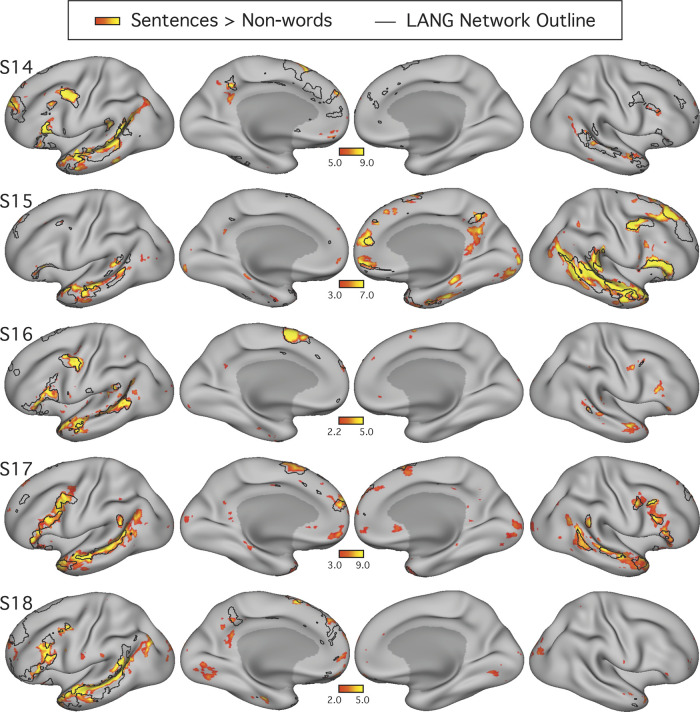Fig. 17.
Triplication of close spatial correspondence between the language network and regions activated during a language task contrast. Analysis of the triplication cohort (study 4) recapitulated the findings from the original (studies 1 and 2; see Fig. 5) and replication (study 3; see Fig. 12) cohorts. The language network (LANG) is shown in black outline and was defined using k-means clustering (Fig. 16). Red-yellow color bars show within-individual z-normalized β-values (i.e., “increased activation”) for the contrast of reading sentences vs. reading lists of nonwords. In all subjects (S14–S18), the language task activations fell predominantly within the boundaries of the intrinsically defined candidate language network. Subject S15 showed larger regions of activation in the right than in the left hemisphere, corresponding to this subject’s unusual right-lateralized LANG network (see Fig. 16). The detailed anatomy of the distributed intrinsic network corresponded closely with regions showing task-driven activation, including in smaller areas extending beyond the classical language zones (e.g., see S14 and S17), again suggesting that the entire intrinsically organized network is functionally specialized.

